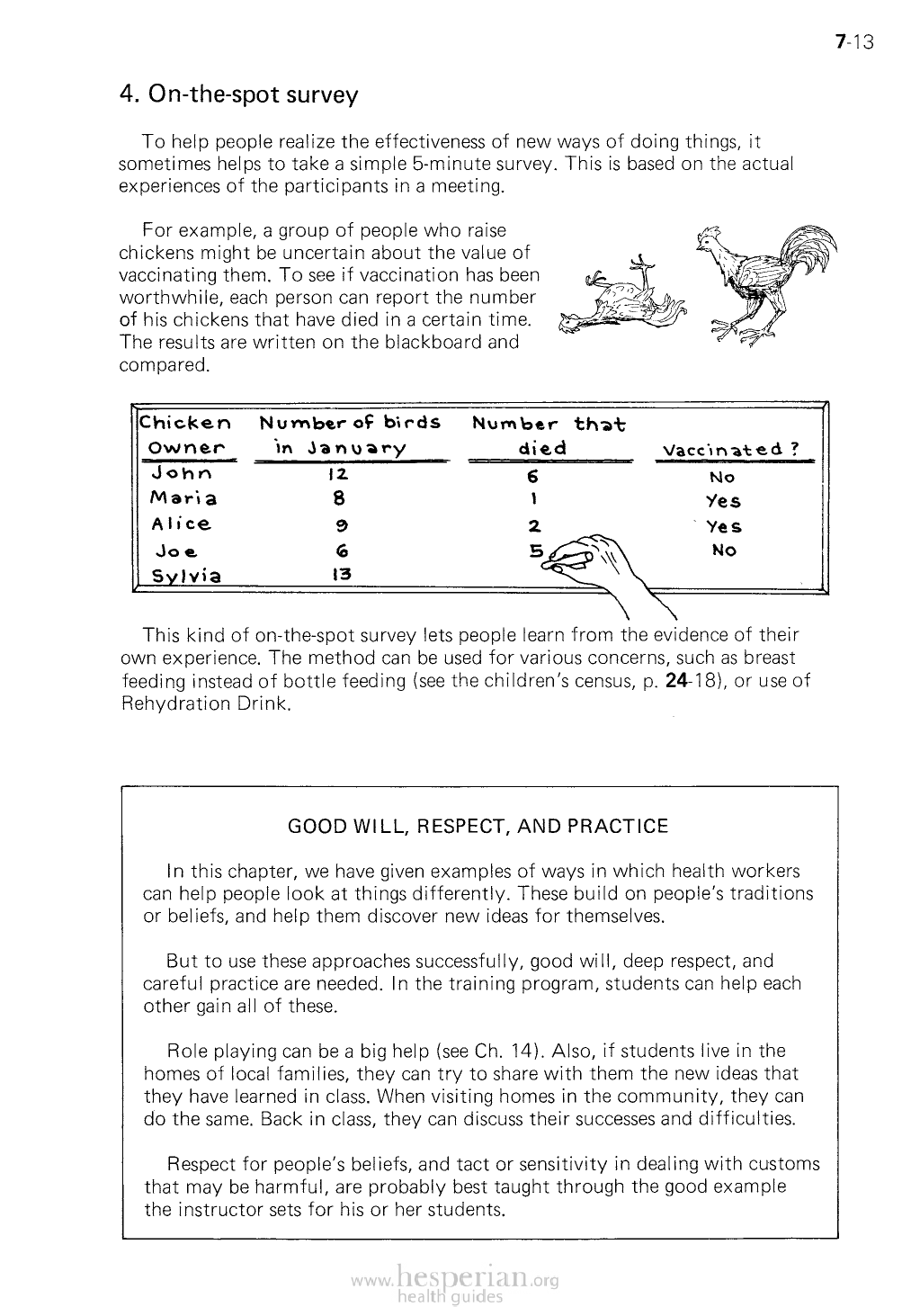
7-13
4. On-the-spot survey
To help people realize the effectiveness of new ways of doing things, it sometimes
helps to take a simple 5-minute survey. This is based on the actual experiences of the
participants in a meeting.
For example, a group of people who raise
chickens might be uncertain about the value of
vaccinating them. To see if vaccination has been
worthwhile, each person can report the number
of his chickens that have died in a certain time.
The results are written on the blackboard and
compared.
This kind of on-the-spot survey lets people learn from the evidence of their own
experience. The method can be used for various concerns, such as breast feeding
instead of bottle feeding (see the children’s census, p. 24-18), or use of Rehydration
Drink.
GOOD WILL, RESPECT, AND PRACTICE
In this chapter, we have given examples of ways in which health workers can
help people look at things differently. These build on people’s traditions or beliefs,
and help them discover new ideas for themselves.
But to use these approaches successfully, good will, deep respect, and careful
practice are needed. In the training program, students can help each other gain all
of these.
Role playing can be a big help (see Ch. 14). Also, if students live in the homes
of local families, they can try to share with them the new ideas that they have
learned in class. When visiting homes in the community, they can do the same.
Back in class, they can discuss their successes and difficulties.
Respect for people’s beliefs, and tact or sensitivity in dealing with customs that
may be harmful, are probably best taught through the good example the instructor
sets for his or her students.